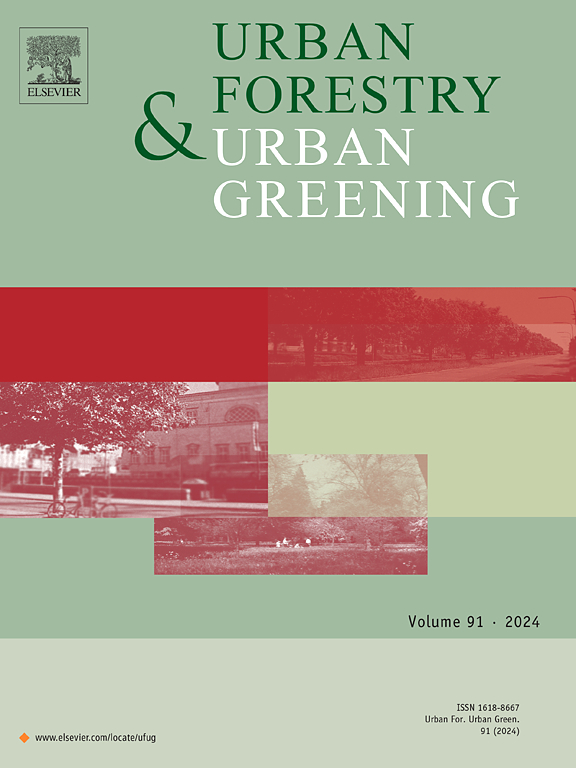Assessing the vulnerability of urban tree species to climate change: The case study of Lisbon gardens
IF 6
2区 环境科学与生态学
Q1 ENVIRONMENTAL STUDIES
引用次数: 0
Abstract
To mitigate the effects of climate change on urban green spaces, adaptive strategies are required, particularly regarding tree species. Lisbon is a most vulnerable city to extreme climate events and the performance and management of the numerous and diverse trees found in its gardens and parks are of much concern. We evaluated the vulnerability of such trees to predicted future Lisbon climates using the Climate Assessment Tool (Climate Change Alliance of Botanic Gardens, 2024) and inventories from 63 historical gardens and parks, including three botanical gardens. With the extensive information of the latter we: (i) identified and classified the species according to biogeographical origins; (ii) pinpointed those most vulnerable to, or favoured by climate change; and (iii) assessed the vulnerability of each studied site, according to the species present, their risk level and abundance. Among the selected 318 taxa (corresponding to 19,579 trees), the Palaearctic biogeographical region predominates. The highest risk levels were found in 50 % (77 %, for the most pessimistic climate scenario) of the Palaearctic species, which include many native taxa. Conversely, about 56 % of the Neotropical species are predicted to perform better under the worst climate change scenario. Only one of the ten most abundant tree species in Lisbon – Jacaranda mimosifolia – might remain invulnerable. Management plans for most Lisbon green spaces must therefore reexamine the use of Palaearctic species and tackle challenging adjustments, including the gradual replacement of familiar species (increasingly more difficult to maintain) by others with better performance under future climate conditions.
求助全文
约1分钟内获得全文
求助全文
来源期刊

Urban Forestry & Urban Greening
FORESTRY-
CiteScore
11.70
自引率
12.50%
发文量
289
审稿时长
70 days
期刊介绍:
Urban Forestry and Urban Greening is a refereed, international journal aimed at presenting high-quality research with urban and peri-urban woody and non-woody vegetation and its use, planning, design, establishment and management as its main topics. Urban Forestry and Urban Greening concentrates on all tree-dominated (as joint together in the urban forest) as well as other green resources in and around urban areas, such as woodlands, public and private urban parks and gardens, urban nature areas, street tree and square plantations, botanical gardens and cemeteries.
The journal welcomes basic and applied research papers, as well as review papers and short communications. Contributions should focus on one or more of the following aspects:
-Form and functions of urban forests and other vegetation, including aspects of urban ecology.
-Policy-making, planning and design related to urban forests and other vegetation.
-Selection and establishment of tree resources and other vegetation for urban environments.
-Management of urban forests and other vegetation.
Original contributions of a high academic standard are invited from a wide range of disciplines and fields, including forestry, biology, horticulture, arboriculture, landscape ecology, pathology, soil science, hydrology, landscape architecture, landscape planning, urban planning and design, economics, sociology, environmental psychology, public health, and education.
 求助内容:
求助内容: 应助结果提醒方式:
应助结果提醒方式:


